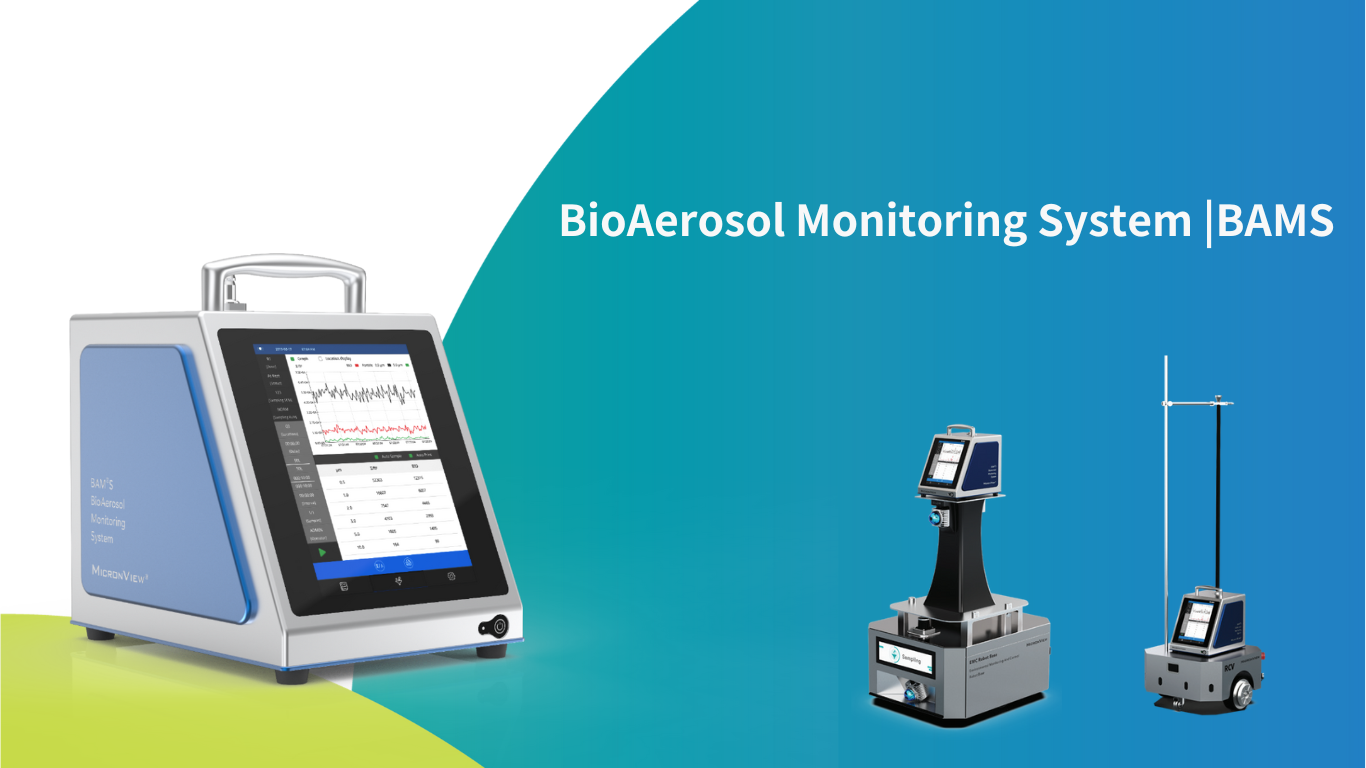Visitas:0 Autor:Christine Troutman – Director of Scientific Operations Hora de publicación: 2025-04-07 Origen:Sitio
As pharmaceutical manufacturers seek to modernize and de-risk their aseptic processing workflows, Biofluorescent Particle Counters (BFPCs), such as MicronView's BAMS, are emerging as a critical tool for continuous viable particle monitoring. These real-time systems, which detect biologic particles using laser-induced fluorescence, offer immediate contamination insight—dramatically reducing the time to result compared to traditional culture-based methods.

Yet, with any rapid microbiological method (RMM), regulatory alignment and proper validation are essential. Here's how pharmaceutical manufacturers can navigate the regulatory landscape and develop a robust validation framework for BFPC implementation.
Global Regulatory Support for BFPCs and RMMs
EU GMP Annex 1 (2022)
The European Medicines Agency's revised Annex 1 now explicitly encourages:
- Continuous viable particle monitoring in Grade A and B areas
- Adoption of rapid microbial methods, provided they are validated
Annex 1's emphasis on risk-based environmental control aligns well with BFPCs that offer real-time alerts and include culturable filters (e.g., gelatin) for microbial identification following an excursion.
USP <1223> and U.S. FDA Guidance
In the United States, USP <1223> is the definitive guide for validating rapid microbiological methods. It outlines key performance characteristics that must be established such as:
Accuracy
Precision
Limit of Detection (LOD)
Specificity
Robustness
In addition, the FDA's Process Analytical Technology (PAT) Framework encourages innovative tools that enhance process understanding and control. BFPCs fit squarely into this philosophy, offering fast, continuous, and high-sensitivity monitoring.
Manufacturer Validation: Meeting USP <1223> Standards
BFPC manufacturers should ensure their technology complies with USP <1223> criteria before marketing to regulated industries. The manufacturer-led testing includes:
- Demonstrating that the BFPC can detect viable particles with accuracy and sensitivity equivalent to or better than growth-based methods
- Evaluating precision and repeatability under controlled conditions
- Conducting interferent testing to verify that common materials used in cleanroom environments that pose a potential for false-positive counts are well understood
For example, MicronView's BAMS (BioAerosol Monitoring System) has been fully validated under USP <1223>,providing end-user validation and regulatory discussions with the evidence needed to support this technology.
End-User Validation: A Practical and Flexible Framework
Once the decision to implement a BFPC is made, each pharmaceutical company is responsible for validating the BFPC within their facility. MicronView recommends a three-phase Performance Qualification (PQ) framework for our BAMS. This framework can and should be adjusted based on the specific advice from regulators or unique user requirements.
1. Equivalence Testing
The first step in end-user validation is establishing decision-making equivalence between the BAMS and traditional environmental monitoring methods. This is typically done through side-by-side sampling, where BAMS results (e.g., AFU counts) are directly compared to those from growth-based methods like active air samplers across multiple cleanroom grades.
This phase not only demonstrates whether the BAMS can detect contamination events with similar accuracy but also helps define appropriate alert and action limits for real-time monitoring.
To effectively perform equivalence testing, consider the following:
- Establish BAMS alert/action levels based on historical CFU trends from your facility's traditional method.
- Conduct testing in various cleanroom environments, including simulations, to capture a range of possible contamination levels—especially important in Grade A areas where viable counts may be zero.
- Use equivalence data to justify integration of BAMS into your environmental monitoring program, either to supplement or replace existing methods
2. Accuracy and Precision Calculations
Using the data from equivalency tests:
- Accuracy: Ensure that BAMS detects at least 70% of the microbial burden measured by the traditional method
- Precision: Evaluate repeatability using the relative standard deviation (RSD) of multiple BAMS samples, ensuring consistency equal to or better than the growth-based method
3. Interferent Testing
Assess materials (e.g., gloves, disinfectants, tubing) commonly found in the cleanroom the BAMS will be used in to ensure they do not falsely trigger a fluorescence response. This step helps avoid false-positive biological counts and supports SOP development for BAMS usage.
Use Case Flexibility: From Sterile Fill Lines to Root Cause Investigations
This validation approach allows the BAMS to be validated for a variety of applications, such as:
- Grade A Isolators: Use simulations or surrounding lower-grade rooms to collect data, since viable counts may be zero in fully operational isolators
- Comparative Cleanroom Studies: Use high- to low-grade rooms to confirm that BAMS detects an increase in biologic particles as sterility decreases
- Investigations: BAMS can be used without direct comparison to traditional methods when deployed for HVAC integrity testing, aseptic training, or root cause investigations
In all cases, a pre-approved investigational or validation plan should be documented and retained for audit purposes.
Recommendation: Engage Regulators Early
When implementing a novel system like a BFPC, early and proactive engagement with regulatory authorities is highly recommended. Whether in the EU, U.S., or elsewhere, regulators are generally supportive of technologies that improve sensitivity and control, particularly when the system:
- Is used to supplement traditional sampling
- Provides greater sensitivity than compendial methods
- Enables faster response times during excursions
- Aligns with data integrity principles
Regulators can provide feedback on validation protocols and help ensure that your approach meets expectations for inspections, especially if you’re using the BFPC to make real-time quality decisions.
Final Thoughts
BFPCs are transforming the way pharmaceutical manufacturers monitor for microbial contamination, offering a modern, high-sensitivity alternative to traditional methods. With growing global regulatory support and flexible validation pathways, BFPCs can be confidently implemented, provided both the manufacturer and the end user commit to a rigorous, scientifically justified validation process.
By aligning with USP <1223>, understanding Annex 1 expectations, and working collaboratively with regulators, companies can unlock the full benefits of BFPCs: faster investigations, real-time risk management, and ultimately, better product and patient protection.
